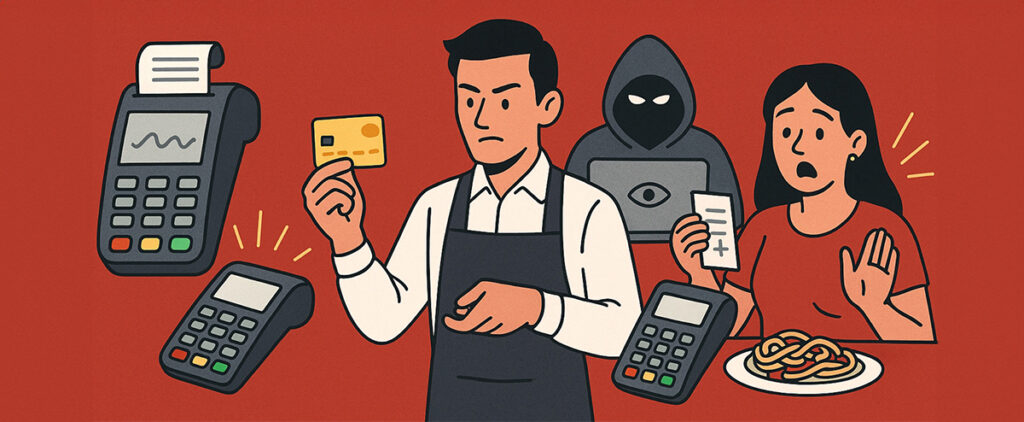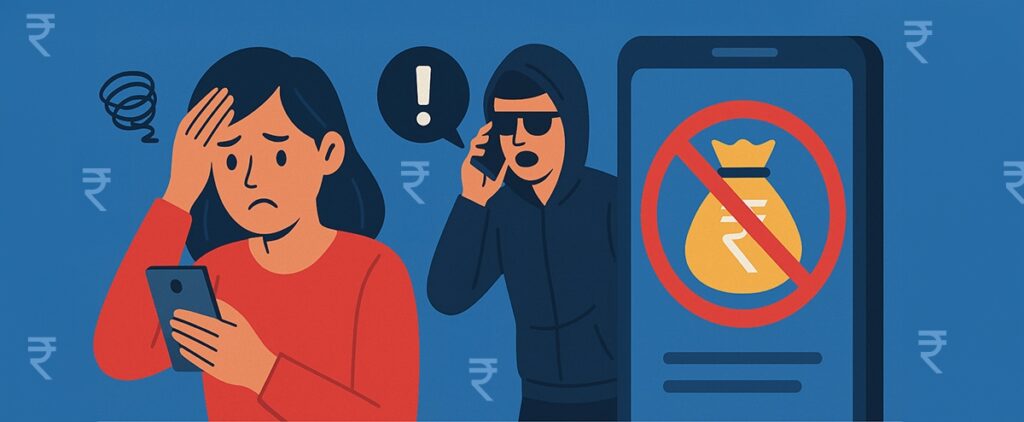
W ith digital payments skyrocketing in India, the convenience of instant transfers has become a daily reality for lakhs of us. From paying for groceries to settling utility bills, UPI and low-cost internet access have
enabled quick cashless transactions in real time. In fact, total digital payment transactions exceeded 18,000 crore in 2024-25.Yet, as digital commerce exploded, so did the number of scammers trying to take advantage of gaps in financial literacy of those who are less-tech savvy, resulting in an unfortunate loss of approximately ₹14.57 billion, per the Reserve Bank of India (RBI).
India’s digital transformation has huge potential, but it presents challenges to customers who fall prey to digital thieves. Asking banks, fintech and regulators to build a safer digital payment ecosystem continues to be a work in progress. The RBI’s Central Payments Fraud Information Registry (CPFIR) assists in monitoring payment fraud, but ultimately financial literacy and digital awareness are the two key pillars which will go a long way in protecting consumers.
Scammers have been able to harness the uptick in cashless payments to defraud lakhs of trusting and unsuspecting Indians. It is unfortunate that they have taken advantage of the plethora of digital wallets now available, including Paytm, PhonePe, Google Pay, Amazon Pay,and Paypal. So, while digital wallets represent some of the best conveniences one could ever hope for, they also come with risks.
But, what is a digital wallet? A digital wallet (also referred to as an e-wallet) is an app you can use on your phone or computer. It helps you make payments and store things like your driver’s license, loyalty cards, and tickets. These wallets often have extra security, like encryption, to keep your info safe. But, for example, if you were to lose your phone and if someone gained unsolicited access to your device, they can quickly get into your wallet and compromise your personal and financial information.
Scammers exploit vulnerabilities in digital wallet systems, leveraging techniques such as phishing, SIM swaps, and malware attacks.
Protecting your digital wallet is crucial in today’s digital age.
Common Digital Payment Fraud Tactics
- Phishing and Social Engineering Attacks: Phishing and Social Engineering Attacks: Scammers frequently impersonate bank personnel or government officials through fake phone calls, messages, and emails to deceive unsuspecting individuals into providing sensitive information. One clever tactic involves QR codes, where users, who are convinced they will be “receiving” money after scanning the code, unwittingly initiate a transfer of funds instead. More advanced threats include Man-in-the-Browser or Man-in-the-Middle attacks which intercept users while online transactions are being completed, reading legitimate payment data from the users’ Internet browser while the user types their credit card or bank account numbers.
- Malicious Apps and Fake Payment Applications: Ever downloaded an app that looked official but wasn’t? That’s what these fake apps rely on. They mimic trusted payment apps but steal your credentials and even make unauthorized transactions. RBI’s advice is simple: only download apps from official store like Google Play Store to avoid getting duped.
- Weak Authentication and Password Practices: We’ve all been guilty of using easy-to-guess passwords or reusing them across apps. But this makes it easy for scammers to break in. Multi-factor authentication (MFA) and AI-based fraud detection are lifesavers here. The stronger your passwords and pins, the safer your money stays.
- Device Theft and QR Code Frauds: If your device gets lost or stolen with an active digital wallet, it’s an open invitation for scammers. Scammers also manipulate QR codes to reroute payments, often targeting small businesses and street vendors by slapping their QR codes onto theirs.
- Public Wi-Fi and Device Security: We’ve all been tempted to make a quick payment over public Wi-Fi. It’s convenient, right? But it’s also very risky. Hackers can easily intercept your data. Stick to secure networks or use a VPN for protection.
How to Protect Yourself from Digital Payment Fraud
- Enable Multi-Factor Authentication (MFA): Add an extra layer of security by requiring multiple verification methods.
- Beware of Phishing Scams: Verify links and messages before clicking. Be cautious of unsolicited calls and emails.
- Download Apps from Trusted Sources: Stick to official app store like Google Play.
- Create Complex Passwords and Use Biometrics: Make sure that you use complex passwords and enable biometric authentication.
- Avoid Using Public Wi-Fi for Transactions: Whenever possible, use secure networks or a VPN to make digital payments.
- Monitor Transactions Regularly: Set up alerts and review transactions frequently.
- Stay Informed: Follow updates from banks and financial institutions on emerging threats.
By being aware about threats and adopting robust security measures, Indian netizens can confidently use digital payments while avoiding fraud.



 Financial Safety
Financial Safety 







